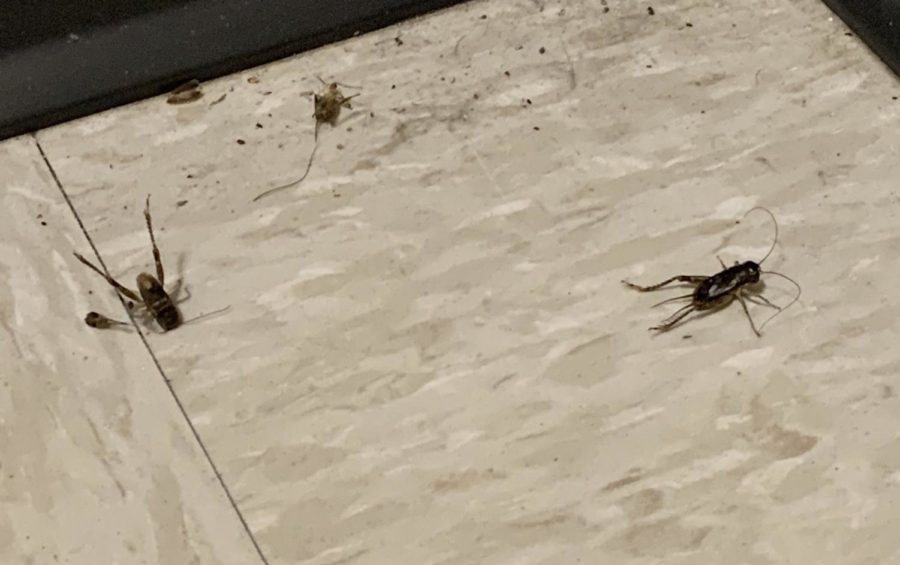It’s Crick-getting Out Of Hand
November 25, 2019
It was not an uncommon sight this fall to walk into school and be greeted with clusters of crickets, both alive and dead. These pests have invaded the first floor of our school to a nearly concerning degree.
Crickets are not an uncommon pest to have to deal with in this area during the spring and fall. A 2016 article from the Taunton Gazette described an infestation of camel crickets in a neighbor’s shed. Camel crickets are common home invaders, enjoying dark, damp areas such as basements, crawlspaces, and cluttered areas. This breed of cricket commonly congregate in large numbers can quickly turn into a problem if they begin to breed. Their spider-like appearance is only contradicted by their large antenna and jumping ability. Other commonly invasive cricket species in this area include field and house crickets. These breeds, although nocturnal, have a strong attraction to electric light. House crickets can sometimes invade in groups of one thousand or more.
Crickets usually only move indoors when the temperature begins changing to either be hotter or cooler. This lines up with the timing of the first floor’s cricket takeover. Beginning in September, while it was still quite warm, and continuing on until now as the temperature steadily drops as we move closer to winter.
Although the sprinkling of cricket carcasses decorating the first floor hallways is not a pleasant sight, it isn’t the only side effect that these insects cause. Crickets in the wild tend to mostly eat plant debris and the occasional dead insect. When they are trapped indoors however, they can feed on fabrics and paper products, two things that are quite abundant in a school. Although crickets prefer items stained with food or sweat, they are still known to damage items such as curtains, rugs, and clothing. These pests have also caused a disturbance among the first floor teachers, Mrs. Ashley, a graphics teacher, can attest to this. “The crickets can be quite a distraction during class time. I want to bring all the crickets to safety, but we also have work to do!” Ashley said. Mrs. Ashley rates the cricket problem as a four out of ten, considering they aren’t a physically harmful insect. Her main concern is the safety of the cricket population that has unknowingly taken up residence in SBRHS.
Ashley also has a solution that she thinks should be used to eliminate the cricket problem, “I think a cricket rescue/prevention plan should be put into place. Perhaps a pest specialist would know how to prevent these crickets from entering the school building in the future”. Crickets lay their eggs in the fall and can live for a year or longer. If the crickets taking up residence in our school are camel or house crickets, the species capable of laying eggs indoors, this problem may crick-get out of hand.


